Interview: Robin Koda of Koda Farms
We get the history behind Kokuho Rose heirloom brown rice from California’s Central Valley


Located in tiny town of South Dos Palos in the heart of California’s Central Valley, Koda Farms grows Kokuho Rose, one of the only heirloom rice strains grown in California. Now helmed by siblings Robin Koda and Ross Koda, the century-old rice farm was originally founded by their grandfather Kiesaburo Koda, a descendant of rice traders and the son of a samurai-turned-rice miller. The budding Japanese agronomist arrived in California in 1908, and over the years became a leader in the rice farming community thanks his pioneering growing techniques. During WWII, Koda and his family were forced to give up their farm to strangers when they were relocated to an internment camp in Colorado for three years. Immediately upon release, Koda returned to California—and the resulting derelict farm—and turned the operations over to his sons, who used their father’s foresight to develop a brown rice breeding program that led to what is now known as Kokuho Rose.
For the past 15 years Robin and her brother have been overseeing the farms, putting effort into transforming a selection of the crops to organic in 2004. To learn more about the admired rice strain, the history behind the farm, their current growing practice and tips on cooking rice, we recently caught up with Robin for a brief chat.
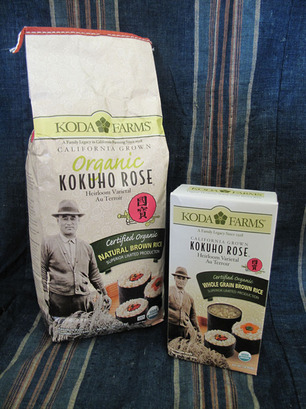
How did the name Kokuho Rose come about?
Kokuho Rose is literally a trade name my grandfather used in the 1950s. At the time he had one type of rice referred to as Kokuho. In the ’50s, after they came back to the farm, they started up their seed program intensely again and [became] the most prominent rice breeder in the U.S.
How did World War II affect your family?
Back then [renowned rice breeder] Hughes Williams was nice enough to come and work for them. After the war there was a lot of anti-Asian sentiment. Many people did not want to have anything to do with Japanese Americans.
How did Hughes Williams contribute to the development of the rice crop?
Hughes Williams was an unusual man. He was very open-minded. During the ’50s he developed a specific strain of rice that became known as Kokuho Rose. In the early 1960s when this strain of rice was commercially introduced it was very popular and we couldn’t meet the demand to keep it on the shelf year-round. So rather than let it disappear from the shelf we got into an arrangement with a broker in the Bay Area, who we then gave the original seed to take to Northern California to try growing up there to cover the lapse in the year when we couldn’t meet the demand.
How is the northern strain different than the southern one?
People understand that grapes vary from place to place in character, rice does too. We are the southernmost rice farm in California. When that strain went north, they had to breed it some more and cross breed it to make it thrived up there. So there are literally two versions of Kokuho Rose. That version predominates the marketplace. It is a higher yielding, faster maturing strain. But it does not have the same subtleties and character of the original heirloom strain.
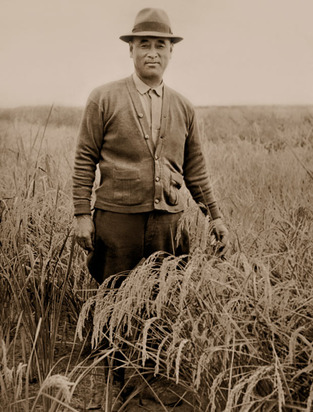
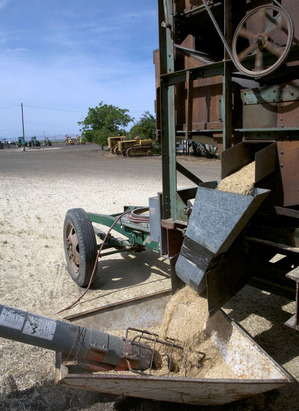
What are the characteristics of your heirloom strain?
People like Jessica [Koslow] at Sqirl, who have a very refined palate, can distinguish the differences immediately. When we talk about Kokuho Rose being an heirloom strain, we are literally describing a rice that is old fashioned in the way it grows and the inherent characteristics. It is tall in stature. It is slow maturing and low yielding. In rice breeding most people want to breed shorter stature rice with a higher yield per acre. You get to market faster but you lose flavor.
How do you cook the rice? Which method do you prefer—stovetop or rice cooker?
It is sort of like apples and oranges. I use both methods for different results. If I want to cook rice quickly and walk away from the appliance, a rice cooker is the easiest way to go. The results are going to be consistent. I do that when I want to eat rice as a plain side dish staple. If I want more separation in the grains, then I will definitely do the stovetop method. With that method you are dumping out some of the starch. When you diminish the starch your rice kernels will separate more.
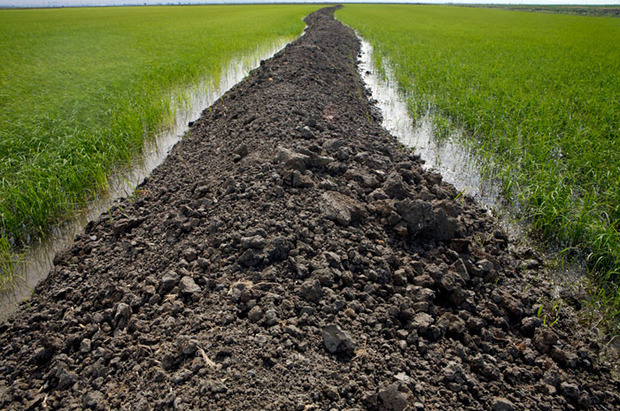
What is happening next at the farm?
We are always in trials for new crops that are suitable for rotation with our organic rice. Organic rice typically is grown one year, then a rotation crop. We are on a three-year rotation because the weeds are particularly tenacious down here. So for those years when we are not growing rice we are looking for alternative nitrogen fixing crops. Two that we are growing right now are garbanzo beans and black-eyed peas.

How is being on the farm different now from when you were a child?
As a kid the rice farm was a really wonderful place to grow up. In the summer we would walk the levees, collect tadpoles, fish for crawdads and find birds’ nests. Right now it is a battle. A battle to educate people that rice is not just a simple carbohydrate or a filler. There are a lot of nuances in good rice and tens of thousands of varieties. When I go to the Alemany Farmers Market or the Fancy Food Show, I try to always take a large sheath of rice on the stalk in the hull because a lot of people don’t even know what it looks like.
For more information on Koda Kokuho Rose Heirloom Rose visit their website. For cooking inspiration we asked Sqirl owner Jessica Koslow to share her restaurant’s renowned rice porridge recipe. Check it out after the jump.
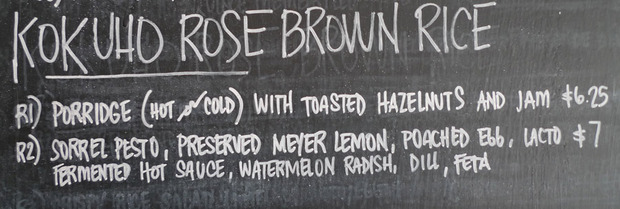
While working on the plans for the menu at Los Angeles’ recently opened Sqirl café, Koslow bought a package of Koda Farms Kokuho Rose Rice at Cookbook in Echo Park. The aromatic flavors inspired her to plan two signature dishes for her menu, including a rice porridge that’s fast become a favorite. “At Sqirl we boil the Kokuho Rose Rice in water then drain it and let it rest and stay warm in a rice cooker. It is surprisingly easy. It’s like quinoa or faro and grains like that. This rice porridge recipe is based on Risegrod, a Danish rice porridge that we top with house-made preserves and toasted hazelnuts.”
1.1 kg organic whole milk
1.5 kg water
4 grams salt
200 grams rice
1.2 vanilla pod split seeded and scraped
50 grams sugar
Rinse rice in cold water. Combine everything in a pan and bring to a boil, reduce heat and simmer for 55 minutes until rice is soft and liquid has thickened. Serve warm or cold. Expect the porridge to keep for up to one week in an airtight container.











